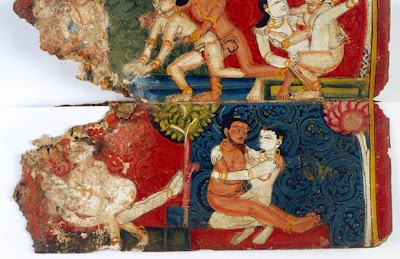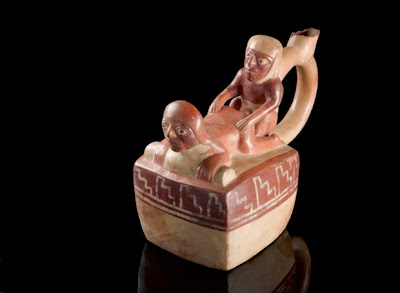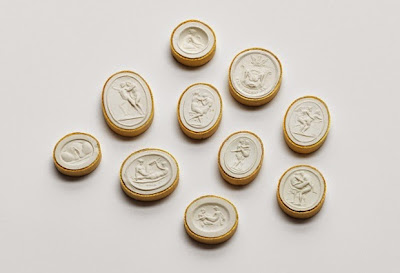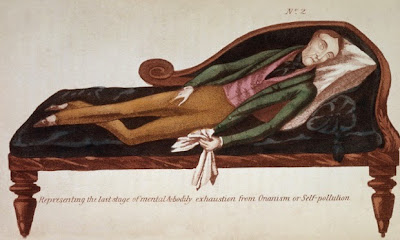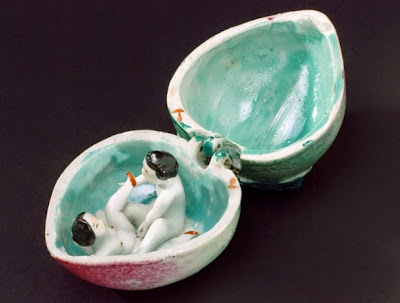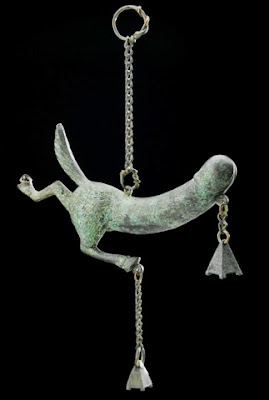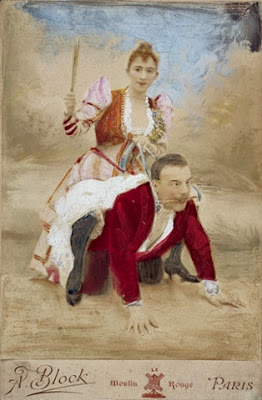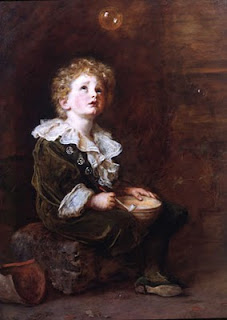![]()
Love is a universal emotion. So is hatred; jealousy; rage; despair. Each emotion is hard wired into the centre of our being. We are programmed. Emily Brontë tackles each emotion through her characters, Heathcliff and Catherine, in her Gothic novel “Wuthering Heights”.
I personally think that “Wuthering Heights” is the great Erotic novel of the 19th and “20th centuries. Written by Emily Brontë, it was first published in 1847 under the pseudonym Ellis Bell. It is Emily’s only novel.
The name of the novel comes from the Yorkshire manor on the moors on which the story centres (as an adjective; wuthering is a Yorkshire word referring to turbulent weather). The narrative tells the tale of the all-encompassing and passionate, yet thwarted, love between Catherine Earnshaw and Heathcliff, and how this unresolved passion eventually destroys them and many around them.
It is now considered a classic of English literature, but “Wuthering Heights” met with mixed reviews by critics when it first appeared, mainly because of the narrative's stark depiction of mental and physical cruelty. Although Charlotte Brontë's Jane Eyre was generally considered the best of the Brontë sisters' works during most of the nineteenth century, many subsequent critics of “Wuthering Heights” argued that it was a superior achievement.
“Wuthering Heights” is a love story. A love that is distorted; crippled. It is also a work of Gothic fiction, which is demonstrated in the opening chapters.
Today, in the 21st century, we can read Emily Brontë’s passionate story, and read into the sub-text and the explicit text, a tale of bondage and sadomasochism. We talk about falling in love, you can fall in hate too. The dominant, warring personalities of Catherine and Heathcliff, dominate and push the plot forward to its catastrophic conclusion.
The story is narrated by Mr Lockwood, a gentleman visiting the Yorkshire moors where the novel is set, and Nelly Dean, housekeeper to the Earnshaw family, who had been witness of the interlocked destinies of the original owners of the Heights
Mr Lockwood, visits Wuthering Heights and because of bad weather has to stay overnight. He is shown to Catherine’s old room. He speaks of a dream, a nightmare…
“…I muttered, knocking my knuckles through the glass, and stretching an arm out to seize the importunate branch; instead of which, my fingers closed on the fingers of a little, ice-cold hand! The intense horror of nightmare came over me: I tried to draw back my arm, but the hand clung to it, and a most melancholy voice sobbed, 'Let me in—let me in!''Who are you?' I asked, struggling, meanwhile, to disengage myself. 'Catherine Linton,' it replied, shiveringly (why did I think of Linton? I had read Earnshaw twenty times for Linton) 'I'm come home: I'd lost my way on the moor!' As it spoke, I discerned, obscurely, a child's face looking through the window. Terror made me cruel; and, finding it useless to attempt shaking the creature off, I pulled its wrist on to the broken pane, and rubbed it to and fro till the blood ran down and soaked the bedclothes: still it wailed, 'Let me in!' and maintained its tenacious gripe, almost maddening me with fear. 'How can I!' I said at length. 'Let me go, if you want me to let you in!' The fingers relaxed, I snatched mine through the hole, hurriedly piled the books up in a pyramid against it, and stopped my ears to exclude the lamentable prayer. I seemed to keep them closed above a quarter of an hour; yet, the instant I listened again, there was the doleful cry moaning on! 'Begone!' I shouted. 'I'll never let you in, not if you beg for twenty years.''It is twenty years,' mourned the voice: 'twenty years. I've been a waif for twenty years!’”
In a series of flashbacks and time shifts, Emily Brontë draws a powerful picture of the enigmatic Heathcliff, who is brought to Wuthering Heights from the streets of Liverpool by Mr Earnshaw. Heathcliff is ragged, a street urchin, a gypsy boy. Heathcliff is treated as Earnshaw's own children, Catherine and Hindley. After Mr Earnshaw’s death, Heathcliff is bullied by Hindley. Heathcliff and Catherine love each other, but Catherine marries Edgar Linton, a wealthy neighbour from Thrushcross Grange. Heathcliff 's destructive force is unleashed, and his first victim is Catherine, who dies giving birth to a girl, another Catherine. Heathcliff seduces Isabella Linton, Edgar's sister, for no other reason than spite and vengeance, and marries her. They flee to the south. Isabella dies, and Heathcliff takes custody of their son Linton. The boy, Linton and Catherine, the first Catherine’s daughter, Cathy, are married, but always sickly, Linton dies. Increasingly isolated and alienated from daily life, Heathcliff experiences visions, and he longs for the death that will reunite him with Catherine.
The novel begins when all four, including Nelly Dean, the housekeeper, are children. Catherine and Hindley are true blooded siblings, and Heathcliff is adopted into their family. That is all that we are told; if the reader wonders why Mr Earnshaw brings home this child, Heathcliff, Emily Brontë reveals no more; although a few critics have suggested that Heathcliff may be Catherine's illegitimate half-brother.
The plot unravels, and with it, the characters, blooming into bitterness and pride simply by being dishonest with each other. The entire drama is the destruction of the human soul. Brontë brings in a whole new perspective on love. It isn't the epic ballad in tales, or the beautiful quiet bloom between spouses; this is twisted, rampant, tragic and interbred with other less desirable qualities until it is no longer recognisable. Emily Brontë deconstructs love, showing it for the destructive force that it can be when we operate through dishonesty; when our motives lack integrity.
Heathcliff and Catherine are savage; their love is caustic, distorted. As children they roam the Yorkshire Moors like wild creatures; but as an adult, Catherine realises that marriage to Heathcliff would be impossible. She has learnt the qualities of refinement, and accepts the proposal of Edgar Linton.
In a dialogue with Nelly Dean, Catherine states;
“It would degrade me to marry Heathcliff now; so he shall never know how I love him: and that, not because he's handsome, Nelly, but because he's more myself than I am. Whatever our souls are made of, his and mine are the same…”
In a chillingly profane declaration, Catherine asserts;
“Nelly, I am Heathcliff!”
Heathcliff and Catherine are like vampires, incessantly feeding on each other; exchanging blood for blood, wound for wound.
Their love is personified in the desolate and unpredictable Yorkshire Moors.
Catherine chooses culture and materialism, over Nature; her own nature, and the wild unpredictable Heathcliff. Catherine’s dishonesty to herself; to her soul, is the catalyst for the following tragic events.
But Heathcliff has overheard Catherine’s statement;
“It would degrade me to marry Heathcliff…”
Heathcliff exits from the lives of the inhabitants of Wuthering Heights for some time.
Heathcliff returns as a gentleman, having grown stronger and richer during his absence. Catherine is delighted to see him although Edgar is not happy. Edgar's sister, Isabella, now eighteen, falls in love with Heathcliff, seeing him as a romantic, Byronic hero. Heathcliff despises her, but encourages the infatuation, seeing it as a chance for revenge on Edgar. When he embraces Isabella one day at the Grange, there is an argument with Edgar, which causes Catherine to lock herself in her room and fall ill.
The relationship between Isabella and Heathcliff is one of Master and slave, beatings and sadomasochism. Heathcliff kills Isabella’s beloved little dog, simply because he can. And Isabella watches.
“The first thing she saw me do, on coming out of the Grange, was to hang up her little dog; and when she pleaded for it, the first words I uttered that I wish that I had the hanging of every being belonging to her, except one: possibly she took that exception for herself. But no brutality disgusted her: I suppose she had an inate admiration of it, if only her precious person were secure from injury! Now, was it not the depth of absurdity -- of genuine idiocy, for that pitiful, slavish, mean minded brach to dream that I could love her?”
And later, Heathcliff tells Nelly Dean of his marriage to Isabella;
“…I’ve sometimes relented, from pure lack of invention, in my experiments on what she could endure, and still creep shamefully cringing back…”
While Catherine is ill, Heathcliff elopes with Isabella, causing Edgar to disown his sister. The fugitives marry and return two months later to Wuthering Heights. Heathcliff hears that Catherine is ill and arranges with Ellen to visit her in secret. In the early hours of the day after their meeting, Catherine gives birth to her daughter, Cathy, and then dies.
I mentioned earlier, that the love of Catherine and Heathcliff is tainted with vampirism. The consumer of Gothic fiction will be able to relate the death of Catherine in terms of the vampire. Nelly Dean describes Catherine’s appearance;
“On the day of her death, ‘her appearance was altered, there seemed unearthly
beauty in the change’;”
And; “she has a ‘white cheek, and a bloodless lip’”.
Like a vampire, Heathcliff is a creature of darkness; he is of the night. He walks the moonlit, wild, stormy moors alone.
Catherine too, exhibits vampiric traits before her death. In folklore, rejection of a Christian doctrine is one of the few routes by which a person may spontaneously become a vampire. Catherine rejects Christian notions of the afterlife, both in the dream she relates to Nelly, in which she is thrust out of heaven, and in her declaration to Heathcliff that;
“‘they may bury me twelve feet deep but I won’t rest till you are with me I never will!’”
Catherine also displays vampiric traits in an incident that results from
her temporary removal at age fifteen to Thrushcross Grange: the sudden deaths of
both Linton parents. After young Heathcliff disappears, Catherine tells Nelly she is
‘starving’, and falls ill. The Lintons invite her to recuperate at their home, where both parents ‘took the fever, and died within a few days of each other’
When the two are separated, both are forced to refocus their vampiric desire to consume; while Catherine eventually turns her consumptive drive inward, Heathcliff turns his outward, creating a vortex that consumes and destroys all in its reach.
But Heathcliff’s vampirism takes a more literal sense, when he tells Nelly Dean that he has been in considerable proximity with Catherine's body; is Heathcliff the vampire, gloating greedily over Catherine‘s corpse? Or are we to take Nelly’s disapproval as a sign that Heathcliff has committed an act of necrophilia? The passage is chilling; appealing to the dark, unhealthy side of the imagination.
Heathcliff tells Nelly Dean, that while the earth is being prepared for Edgar Linton’s grave, he opens Catherine’s coffin.
“I’ll tell you what I did yesterday! I got the sexton, who was digging Linton’s grave, to remove the earth off her coffin lid, and I opened it. I thought, once I would have stayed there, when I saw her face again -- it is hers yet -- he had hard work to stir me; but he said it would change, if the air blew on it, and so I struck one side of the coffin loose, and covered it up…”
Catherine’s remains are uncorrupted after eighteen years in the ground. Another sign of the vampire. In Heathcliff's viewing of Catherine's corpse, and knowing Heathcliff as the reader now does, I think that a suspicion of necrophilia can be justified. His plans of being buried next to her, hint of a consummation after death. But we really don’t know, Emily Brontë plants the seeds of suggestion in her reader’s mind; it’s up to the reader whether or not to let them germinate.
Perhaps it is something let well alone. But, such is the power of Emily Brontë’s writing, and her acute delineation of character, you just can’t help thinking…
But what is going on here with this shy, delicate parson’s daughter? She lives an insulated existence, close to the Yorkshire Moors, in the Parsonage, with her brother and sisters. Where do these wild emotions that she commits to pen and ink, come from?
It is well documented that all of the Brontë’s were avid readers. Emily and the others, would probably been aware of the work of their contemporaries; Edgar Allen Poe and Ann Radcliffe. They would have known Coleridge’s Gothic poetry, The Rime of the Ancient Mariner and Kubla Khan. And of course they would have read about Lord Byron and following that, the Byronic hero.
Here is part of what Charlotte says about her sister, Emily, and the characters in her novel.
“Where delineation of human character is concerned, the case is different. I am bound to avow that she had scarcely more practical knowledge of the peasantry amongst whom she lived, than a nun has of the country people who sometimes pass her convent gates. My sister's disposition was not naturally gregarious; circumstances favoured and fostered her tendency to seclusion; except to go to church or take a walk on the hills, she rarely crossed the threshold of home. Though her feeling for the people round was benevolent, intercourse with them she never sought; nor, with very few exceptions, ever experienced. And yet she knew them: knew their ways, their language, their family histories; she could hear of them with interest, and talk of them with detail, minute, graphic, and accurate; but WITH them, she rarely exchanged a word. Hence it ensued that what her mind had gathered of the real concerning them, was too exclusively confined to those tragic and terrible traits of which, in listening to the secret annals of every rude vicinage, the memory is sometimes compelled to receive the impress. Her imagination, which was a spirit more sombre than sunny, more powerful than sportive, found in such traits material whence it wrought creations like Heathcliff, like Earnshaw, like Catherine. Having formed these beings, she did not know what she had done. If the auditor of her work, when read in manuscript, shuddered under the grinding influence of natures so relentless and implacable, of spirits so lost and fallen; if it was complained that the mere hearing of certain vivid and fearful scenes banished sleep by night, and disturbed mental peace by day, Ellis Bell would wonder what was meant, and suspect the complainant of affectation. Had she but lived, her mind would of itself have grown like a strong tree, loftier, straighter, wider-spreading, and its matured fruits would have attained a mellower ripeness and sunnier bloom; but on that mind time and experience alone could work: to the influence of other intellects it was not amenable.
Having avowed that over much of 'Wuthering Heights' there broods 'a horror of great darkness'; that, in its storm-heated and electrical atmosphere, we seem at times to breathe lightning: let me point to those spots where clouded day-light and the eclipsed sun still attest their existence. For a specimen of true benevolence and homely fidelity, look at the character of Nelly Dean; for an example of constancy and tenderness, remark that of Edgar Linton. (Some people will think these qualities do not shine so well incarnate in a man as they would do in a woman, but Ellis Bell could never be brought to comprehend this notion: nothing moved her more than any insinuation that the faithfulness and clemency, the long-suffering and loving-kindness which are esteemed virtues in the daughters of Eve, become foibles in the sons of Adam. She held that mercy and forgiveness are the divinest attributes of the Great Being who made both man and woman, and that what clothes the Godhead in glory, can disgrace no form of feeble humanity.) There is a dry saturnine humour in the delineation of old Joseph, and some glimpses of grace and gaiety animate the younger Catherine. Nor is even the first heroine of the name destitute of a certain strange beauty in her fierceness, or of honesty in the midst of perverted passion and passionate perversity.
Heathcliff, indeed, stands unredeemed; never once swerving in his arrow-straight course to perdition, from the time when 'the little black-haired swarthy thing, as dark as if it came from the Devil,' was first unrolled out of the bundle and set on its feet in the farmhouse kitchen, to the hour when Nelly Dean found the grim, stalwart corpse laid on its back in the panel-enclosed bed, with wide-gazing eyes that seemed 'to sneer at her attempt to close them, and parted lips and sharp white teeth that sneered too’”.
Currer Bell. Haworth Parsonage. 1848
















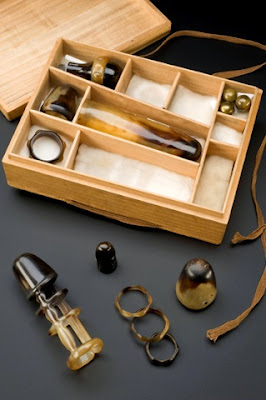
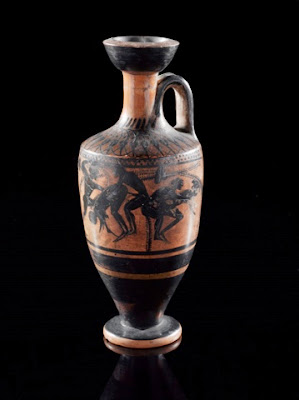
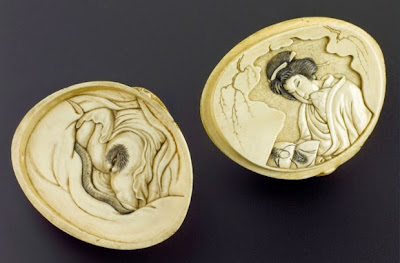

%2Bcirca%2B1825%2C%2BWellcome%2BImages.jpeg)
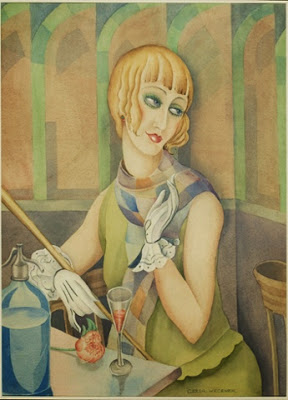
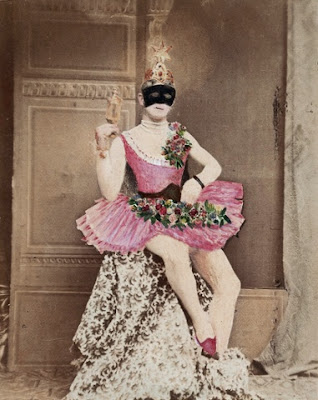%2BWellcome%2BImages.jpeg)
